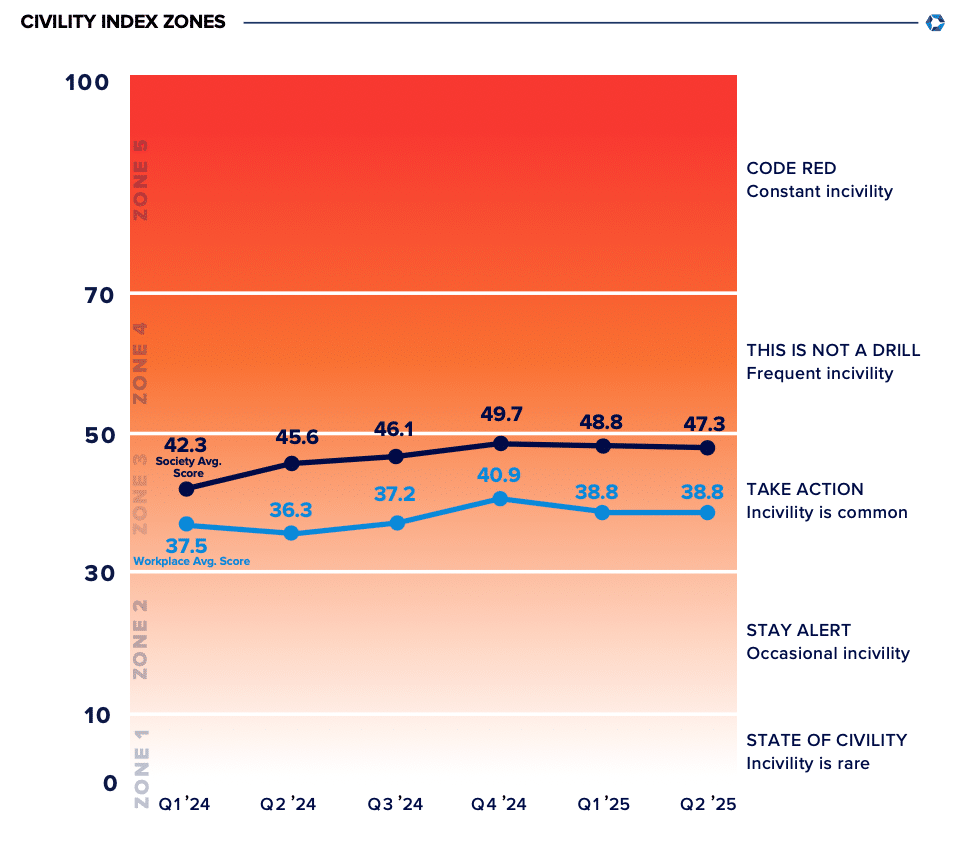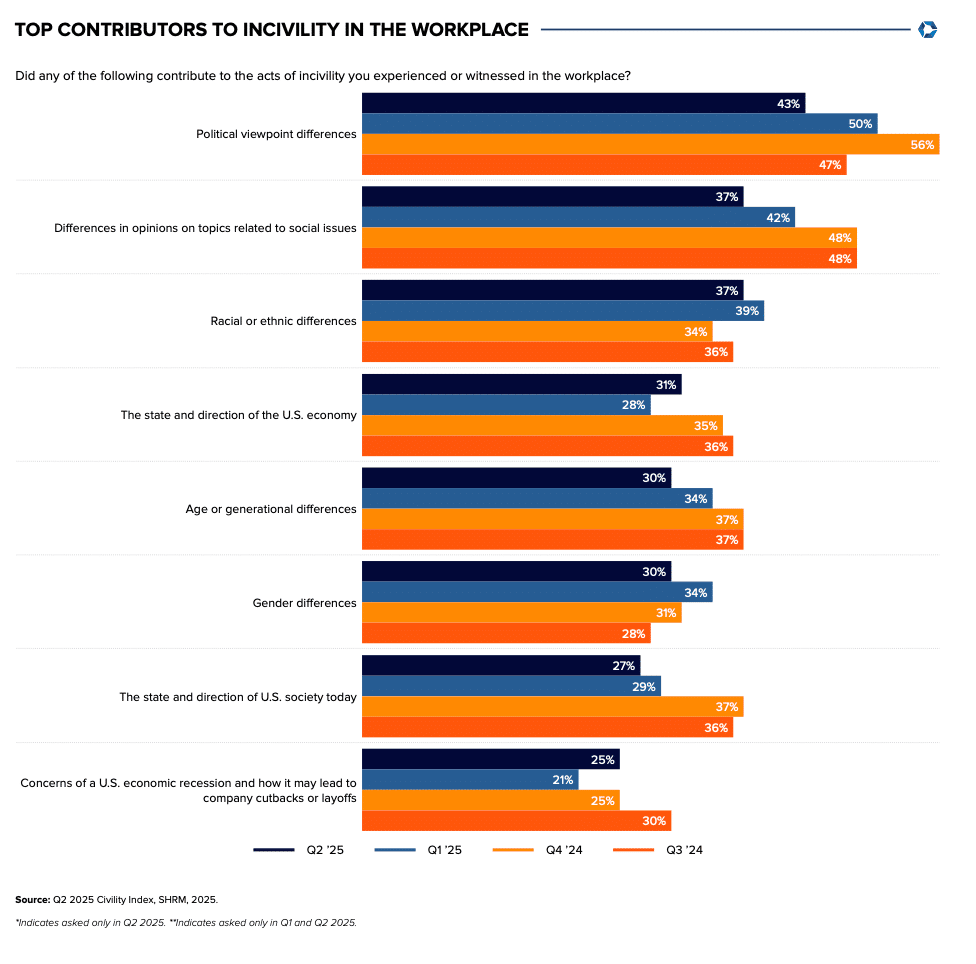Steering Toward Civility: How Empathetic Listening Can Anchor Workplace Culture
The sky was clear when they left the harbor. Calm waters, steady winds, and a confident crew.
The captain scanned the radar. Everything looked ‘normal’. But a few hours in, something shifted. The wind picked up just enough to raise concern. One of the seasoned crew members mentioned the pressure drop and the dark line forming on the horizon.
“Storm building off the port side,” the crew member said quietly.
The captain hesitated. Stormy weather wasn’t on the forecast.
However, the Captain learned over time that technology doesn’t catch everything, and neither does one person, no matter how experienced they may be. He glanced around. The crew looked tense. Subtle cues: silence, shorter replies, eyes on the clouds.
He made the call. A slight course correction, just enough to ease the tension and avoid the worst of the coming squall.
Leadership, he knew, was not just about knowing where to go. It was about listening to the environment, to the crew, and to the subtle signs of trouble before it became a problem.
The same is true in the workplace. Listening with empathy to the winds around you, the tension in meetings, the quiet disengagement, and the honest warnings from your team can reveal storms of incivility before they capsize culture.
And those storms are growing. Workplace incivility is on the rise, and it is costing U.S. organizations billions of dollars each day.
Authority alone will not steady the ship. Empathetic listening can be the anchor that holds your team through rough waters.
When the Crew Feels Ignored Amid Workplace Incivility
A ship can only sail when everyone on board works together.
Yet, we are seeing an alarming number of businesses where incivility is wreaking havoc in the workplace.
Discord can arise from political differences, economic uncertainties, and a lack of managerial intervention.
According to the SHRM Q2 index from 2025, the average workplace scored only 38.8 out of 100 on the Workplace Civility Index.
These disagreements and unrest resulted in over $2 billion in lost daily productivity and absenteeism due to incivility.

Source: Image from SHRM 2025 Civility Index Abstract
Incivility negatively impacts your workers, with 53% reporting that incivility was the cause of several mental health challenges that ultimately hurt their professional and personal lives.
A change in those rates begins at the top. Leadership is responsible not only for intervening in uncivil situations but also for setting a positive tone.
When managers model disrespect or, worse, ignore it, turnover rises, engagement drops, and psychological safety sinks like an anchor.
You can turn those trends around by becoming an empathetic leader who is grounded in empathetic listening. Your steady presence will keep the ship on course and morale afloat.
What Is Empathetic Listening?
Listening is far more complex than processing words.
You can use active listening, critical listening, and empathetic listening.
All three forms of listening are crucial, but empathetic listening will be your strongest tool for resolving incivility.
Here’s a closer look at the three types of listening and what role empathetic listening plays:
- Active listening: Actively participate in the conversation by giving visual cues that you are engaged and repeating phrases back to ensure you understand. Use this form of listening to encourage your team to continue discussing the issues at hand.
- Critical listening: Listen while analyzing the subtleties in their words to understand the full depth of the situation and find a resolution.
- Empathetic listening: Put yourself in the speaker’s shoes to not only understand, but also feel what they are feeling, by trying to grasp the profound emotional implications of the situation for that person.
Empathetic listening means putting yourself in the speaker’s shoes, not just to understand their words but to feel the emotional weight of their experience.
This kind of listening allows you to move beyond observation and into connection. It bridges the gap between hearing and truly feeling what someone else is going through.
During one of our sails, a helmsman became terrified in the middle of a storm. The situation escalated unnecessarily because the crew didn’t take the time to truly understand his fear or respond with compassion.
A more empathetic approach could have calmed the tension and offered the support he needed in that vulnerable moment. Practicing this level of presence takes time and intention.
Hurry and care rarely coexist. You cannot offer genuine empathy at full speed. You have to slow down, drop anchor, and be fully present while someone works through their emotions and regains stability.
That kind of steady presence fosters psychological safety, helps prevent emotional breakdowns, and protects your team from the burnout that drives top talent away.
5 Practical Steps for Civil Conversations
Fostering an environment that supports civil conversations starts with five crucial steps, based on recommendations from SHRM.
1. Education
Before setting sail, you gather information about the sailboat, crew, weather, and route so you aren’t sailing blindly forward. Take the same time to thoroughly educate yourself on any unrest or situations in the workplace before attempting to resolve them.
The following chart outlines some of the main points of incivility in the workplace, providing a starting point for addressing issues that may arise.

Source: Image from SHRM 2025 Civility Index Abstract
2. Understanding
Once you have the whole picture, your goal is to ensure everyone has all the correct information and that your team is aligned.
Using shared language around a topic can help foster mutual understanding and prepare groups for more productive conversations.
3. Respect
Before bringing groups together to resolve incivility, lay the groundwork for respect. Discuss the rules that everyone should follow, such as what constitutes a civil conversation.
Tip: A civil discussion does not include interruptions, raised voices, or name-calling.
Try to encourage each party to use “I” statements rather than accusatory “you” statements.
4. Culture
Civility should be an integral part of your company culture, which begins with leadership and how you model conflict resolution.
Develop a culture that actively addresses issues before they escalate into unrest, rather than letting incivility fester like wood rot, which can take over a ship’s structure if left unaddressed until it causes irreparable damage.
5. Consistency
Even with a strong culture of civility in place, differences and tensions will still arise. That’s normal in any workplace.
What matters is how consistently you tend to the culture. Take time to check in with your teams, listen for early signs of strain, and address issues before they escalate. These small, regular efforts help maintain a healthy culture and prevent larger disruptions down the line.
As steward leaders, we chart the course for workplace culture. When we model respect and empathetic listening, we create strong currents that guide the entire team toward civility and trust.
The Power of Listening
When you build a workplace around empathetic listening, you will see trust deepen, stress drop, and retention rise. You will learn to listen without judging and speak to build others up.
Your teams will feel safer, closer, and more willing to take risks together. They will no longer brace for conflict and will begin to relax into collaboration. As workers feel seen and heard, they will be more likely to stay longer and increase their workplace effort.
According to SHRM findings, 45% of workers said their manager helped them move past incivility when they felt truly supported. Nearly half your workforce could shift from disengaged to re-engaged through one act of empathy.
A simple way to start is through a five-minute daily check-in with each team member. Put aside technology and agendas. Just ask how it’s going and be prepared to listen.
Also, schedule a walk and talk where conversation flows more naturally as you go about your day.
Whatever the method you use, just keep the conversation flowing.
Navigating Toward Civility with Full Sail Leadership
Civility doesn’t begin with policies. It starts with how leaders listen when no one’s watching.
When tension rises or tempers flare, that’s when leaders need to take the wheel and guide everyone back to calm waters.
Empathetic listening will be your guide to calmer waters, helping you steer clear of storms that could capsize your ship. While you can’t control the wind, you can control how well the team works together to navigate out of those storms.
Keep listening for what’s unsaid, respond with steadiness, and set a respectful course that others can follow.
Want to learn how to practice Full Sail Leadership and bring civility to your team? Join us at the next Full Sail Leadership Workshop and let’s chart a new course together.

